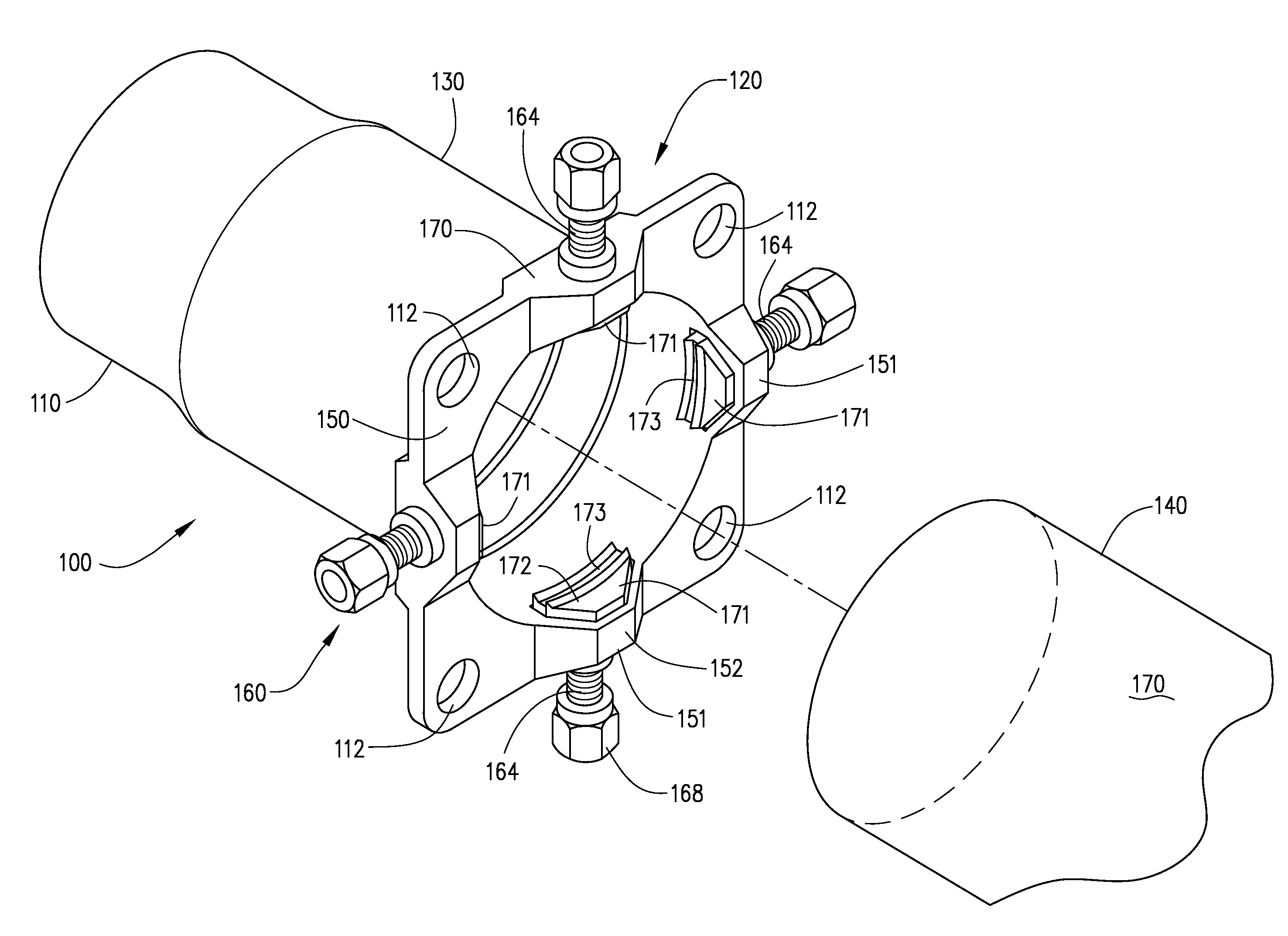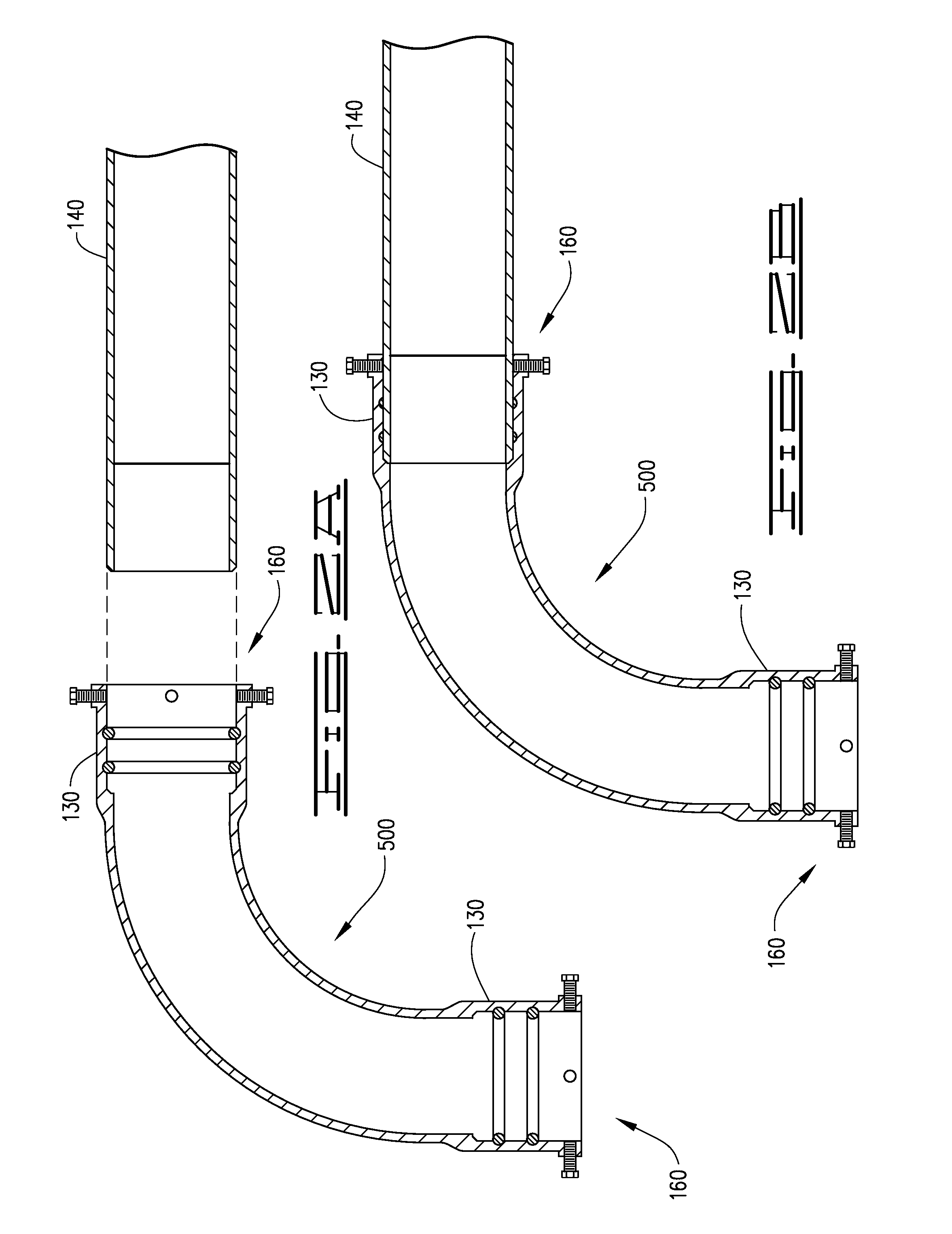Mechanically restrained push-on pipe connection
a push-on fitting and mechanical restraint technology, which is applied in the direction of couplings, manufacturing tools, mechanical devices, etc., can solve the problems of difficult control during the insertion action, arduous and time-consuming tasks, and complicated and time-consuming assembly of push-on fittings
- Summary
- Abstract
- Description
- Claims
- Application Information
AI Technical Summary
Benefits of technology
Problems solved by technology
Method used
Image
Examples
Embodiment Construction
[0033]The following detailed description is of the best currently contemplated modes of carrying out the invention. The description is not to be taken in a limiting sense, but is made merely for the purpose of illustrating the general principles of the invention, since the scope of the invention is best defined by the appended claims.
[0034]Broadly, the current invention includes systems, devices, and methods providing a bell-and-spigot type of joint architecture for joining two lengths of pipe or joining a length of pipe to a fitting by use of a fastening mechanism that is integral to the pipe end or to the fitting. Fittings contemplated for use with the invention may include valves, elbows, terminating devices, and other such devices having a bell-shaped receptacle that receives a pipe end. The invention comprises an improved restrained push-on connection for push-on pipe, which is a hybrid of the push-on and mechanical connection architectures. Portions of the restraint mechanism ...
PUM
| Property | Measurement | Unit |
|---|---|---|
| pressures | aaaaa | aaaaa |
| groove depth | aaaaa | aaaaa |
| groove depth | aaaaa | aaaaa |
Abstract
Description
Claims
Application Information
 Login to View More
Login to View More - R&D
- Intellectual Property
- Life Sciences
- Materials
- Tech Scout
- Unparalleled Data Quality
- Higher Quality Content
- 60% Fewer Hallucinations
Browse by: Latest US Patents, China's latest patents, Technical Efficacy Thesaurus, Application Domain, Technology Topic, Popular Technical Reports.
© 2025 PatSnap. All rights reserved.Legal|Privacy policy|Modern Slavery Act Transparency Statement|Sitemap|About US| Contact US: help@patsnap.com



